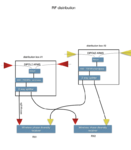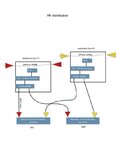Simmiz
Newbie level 5
Hi guys!!
I'm trying to design a RF distribution for my wireless receivers.
I'm a sound recordist working in TV, so I have to deal with wireless microphones daily.
Basically the setup I would like to have is 2 dipole antennae connected to my 2 wireless receivers. I'm pretty good with a soldering iron and confident about SMD.
First open question ; Any advice for this setup? Does and don't ?
2nd question ; I've made a graph for every parts that would suits my needs, for example 20 different model of baluns/filters/power divider from mini-circuit that would work with my project. Some have lower insertion loss, but higher input return loss, Xphase unbalance, Xamplitude unbalanced, how do I tell which element is the most critical and that I need to watch for for this particular application?
I've made a schema to give you an idea of what I'm trying to do.
Thank you so much guys you are awesome! I'm new to this as you can see..

[found at https:// ibb.co/fh51Zq]
I'm trying to design a RF distribution for my wireless receivers.
I'm a sound recordist working in TV, so I have to deal with wireless microphones daily.
Basically the setup I would like to have is 2 dipole antennae connected to my 2 wireless receivers. I'm pretty good with a soldering iron and confident about SMD.
First open question ; Any advice for this setup? Does and don't ?
2nd question ; I've made a graph for every parts that would suits my needs, for example 20 different model of baluns/filters/power divider from mini-circuit that would work with my project. Some have lower insertion loss, but higher input return loss, Xphase unbalance, Xamplitude unbalanced, how do I tell which element is the most critical and that I need to watch for for this particular application?
I've made a schema to give you an idea of what I'm trying to do.
Thank you so much guys you are awesome! I'm new to this as you can see..

[found at https:// ibb.co/fh51Zq]
Attachments
Last edited by a moderator:
